Content
Beer & IP
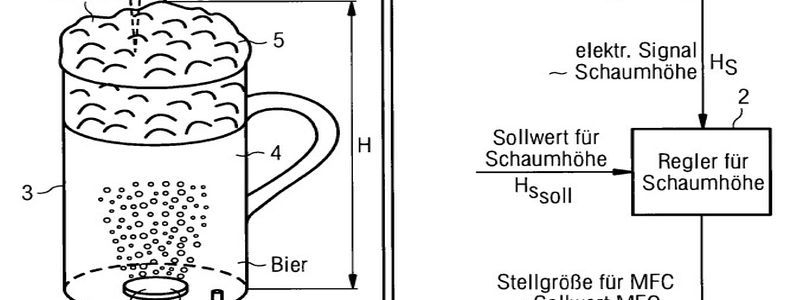
DE102010030284B4
180 years ago: The first "Pilsner" is brewed
180 years ago, on 5 October 1842, the first beer brew was made using a method that has since become world-famous as Pilsner brewing. Joseph Groll, a master brewer from Vilshofen in Lower Bavaria, had been summoned to Pilsen because the townspeople were dissatisfied with their beer. It is even said that they poured out a few barrels on the market square in protest. A monstrous event - even more so in beer-blessed Bohemia!
Until then, Pilsen had traditionally been a top-fermented brewery. In neighbouring Bavaria, however, bottom-fermented beer, which had a longer shelf life but could only be brewed at cold temperatures, was gaining ground. Joseph Groll had already learned the bottom-fermented brewing method from his father. You had to be able to cool down the fermenting vats to 4 to 9 degrees permanently. This was achieved by mining ice in winter and storing it in deep cellars or caves, which then remained cold even in summer.
Before Groll, Pilsner beer was said to be dark and cloudy (and apparently not very tasty). His new brew, on the other hand, was clear and bright, even golden yellow thanks to the only lightly and gently kilned malt, and also nicely tart and durable because of the strong hopping. After a month of storage, the beer, which Groll called "Urquell", was served for the first time in three inns in Pilsen. The guests were enthusiastic. This marked the beginning of the worldwide success of "Pils", the bottom-fermented beer brewed according to Groll's Bavarian brewing method, which was only called "Pilsner Brauart" much later.
Incidentally, despite the success, Groll's contract was not renewed after three years. He returned to Vilshofen, where he died in 1887. Pilsen, however, continued to get its brewers from Bavaria for decades. Today, "Pilsner Urquell / Plzeňský Prazdroj", which is said to be available in more than 50 countries, belongs to a Japanese company.
Serious drinking: Beer and IP
After two long years of deprivation, Oktoberfest has come back. Millions of visitors were 2022 once again pouring millions of liters of beer into themselves in Munich at the world-famous beer fest. Let us have a look at the IP rights surrounding an ancient cultural asset that is constantly being developed further.
Only breweries from Munich are allowed to participate in the Oktoberfest. Although breweries generally attach great importance to their traditions, today state-of-the-art technology is behind one of mankind's oldest beverages. The oldest brewing recipe is around 5,000 years old, but the production process is constantly being technically optimised. This is shown not least by the number of patent applications relating to the brewing process received by the DPMA. Among the more recent applications is, for example, ![]() DE102018130010A1, which seeks to increase the leaching effect of the mash (also
DE102018130010A1, which seeks to increase the leaching effect of the mash (also ![]() WO002020109142A1 (1,17 MB)).
WO002020109142A1 (1,17 MB)).
![]() DE102019118935A1 proposes a brewing process for a bottom-fermented, light full-bodied beer, which is supposed to result in a "considerably higher content of mineral substances". Wood particles as a brewing additive proposes
DE102019118935A1 proposes a brewing process for a bottom-fermented, light full-bodied beer, which is supposed to result in a "considerably higher content of mineral substances". Wood particles as a brewing additive proposes ![]() DE102018124768B3 to achieve the flavour notes of a beer aged in a wooden barrel.
DE102018124768B3 to achieve the flavour notes of a beer aged in a wooden barrel.
There are also always new ideas for beer accessories, such as a "sleeve, tap and container for a beverage" ( ![]() DE102021200420A1) or a "device for efficient cooling in breweries" (
DE102021200420A1) or a "device for efficient cooling in breweries" ( ![]() WO002019048662A1 (1,56 MB)).
WO002019048662A1 (1,56 MB)).
Although the ancient Sumerians and Egyptians already brewed beer, although the Celts already knew different varieties and although the Bavarian Purity Law is already 500 years old - work is still being done diligently to improve beer production.
New brewing inventions
One example is the "process for time-optimised maturation of beer intended for export overseas" ( ![]() DE102016006270A1): with the help of special transport containers, the beer matures on board the transport ship. The brewery can thus get its young beer on its way overseas more quickly.
DE102016006270A1): with the help of special transport containers, the beer matures on board the transport ship. The brewery can thus get its young beer on its way overseas more quickly.
The eye also drinks: A beautiful head of foam is important to many beer connoisseurs. Therefore, ![]() DE102010030284B4 proposes a "method and arrangement for stabilising the foam appearance of beer".
DE102010030284B4 proposes a "method and arrangement for stabilising the foam appearance of beer".
An important trend in recent years has been towards alcohol-free or low-alcohol beer, the optimisation of which in terms of taste continues to be tinkered with, for example with the "Process for the production of an alcohol-reduced or alcohol-free beer" ( ![]() DE102019007067A1).
DE102019007067A1).
In 2021, a good 411 million litres of alcohol-free beer were produced in this country. As reported by the Federal Statistical Office (Destatis), the production volume of non-alcoholic beer has thus increased by 74.1 % over the past ten years.
Less and less thirst for beer in Germany
German breweries sold a total of around 8.5 billion litres of beer in 2021. According to (![]() Destatis) beer sales thus fell by 2.2% or 187.7 million litres compared to the previous year. In 2020, beer sales had already fallen by 5.5% compared to the previous year.
Destatis) beer sales thus fell by 2.2% or 187.7 million litres compared to the previous year. In 2020, beer sales had already fallen by 5.5% compared to the previous year.
In the long term, beer sales in Germany have been declining continuously for years. Since 1993, the volume of beer sold has fallen by a total of 2.7 billion litres or 23.9 %.
In contrast, the export of beer continued to grow slightly. Bavarians in particular export a lot of their "liquid bread": almost a quarter of Bavarian beer production goes abroad.
Incidentally, "Bavarian beer" (312012000102.4) , like "Munich beer" (302009000100.5), is protected at the DPMA as a geographical indication of origin and can therefore be marketed as a regional speciality in a similar way to Parma ham or champagne.
Who can take the most?
According to Destatis, in 2021 Germans drank an average of only 84 litres of beer per capita and year (two years earlier it was just under 92 litres!). However, this still puts them far ahead in an international comparison. For years, however, the Czechs have been the front-runners: although consumption is declining there, too, they were still clearly in the lead worldwide with an average of 135 litres of beer per capita in 2021.
But Germany - and Bavaria in particular - is at the top in terms of diversity: there are said to be around 6000 different German beer varieties - and the trend is rising sharply. That means you could try a different German beer every day for 16 years. If you search DPMAregister for all trademarks in the field of "beer", you will get more than 80,000 hits! Many beer trade marks have become extinct (for example, „Münchner Schlossbräu“), but new ones are constantly being added. Examples are the DE brands 3020221087405 or 3020222166198.
Over 1500 breweries in Germany!
The covid pandemic hit the small breweries particularly hard; some had to close. In 2021, there were still 1512 breweries in Germany. The majority of them, 631, were located in Bavaria.
In addition to the International Beer Day, which has been celebrated worldwide every first Friday in August since 2008, there is also an Day of German Beer (![]() Tag des deutschen Bieres). It is celebrated on 23 April to commemorate the enactment of the Bavarian Land Order of 1516, which stipulated that only hops, barley and water belong in beer - the birth of the German Beer Purity Law. Cheers!
Tag des deutschen Bieres). It is celebrated on 23 April to commemorate the enactment of the Bavarian Land Order of 1516, which stipulated that only hops, barley and water belong in beer - the birth of the German Beer Purity Law. Cheers!
Pictures: DEPATISnet, DPMAregister, unkown / Public domain via Wikimedia Commons, Max Liebermann / Public domain via Wikimedia commons, www.bayern.de
Last updated: 19 May 2025

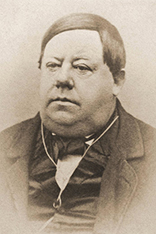


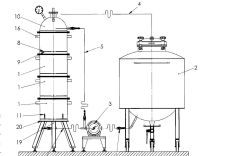
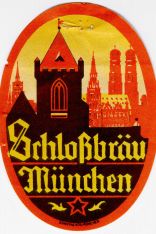
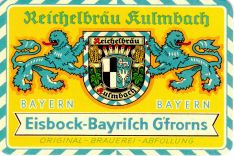
Not only protecting innovations
Social Media